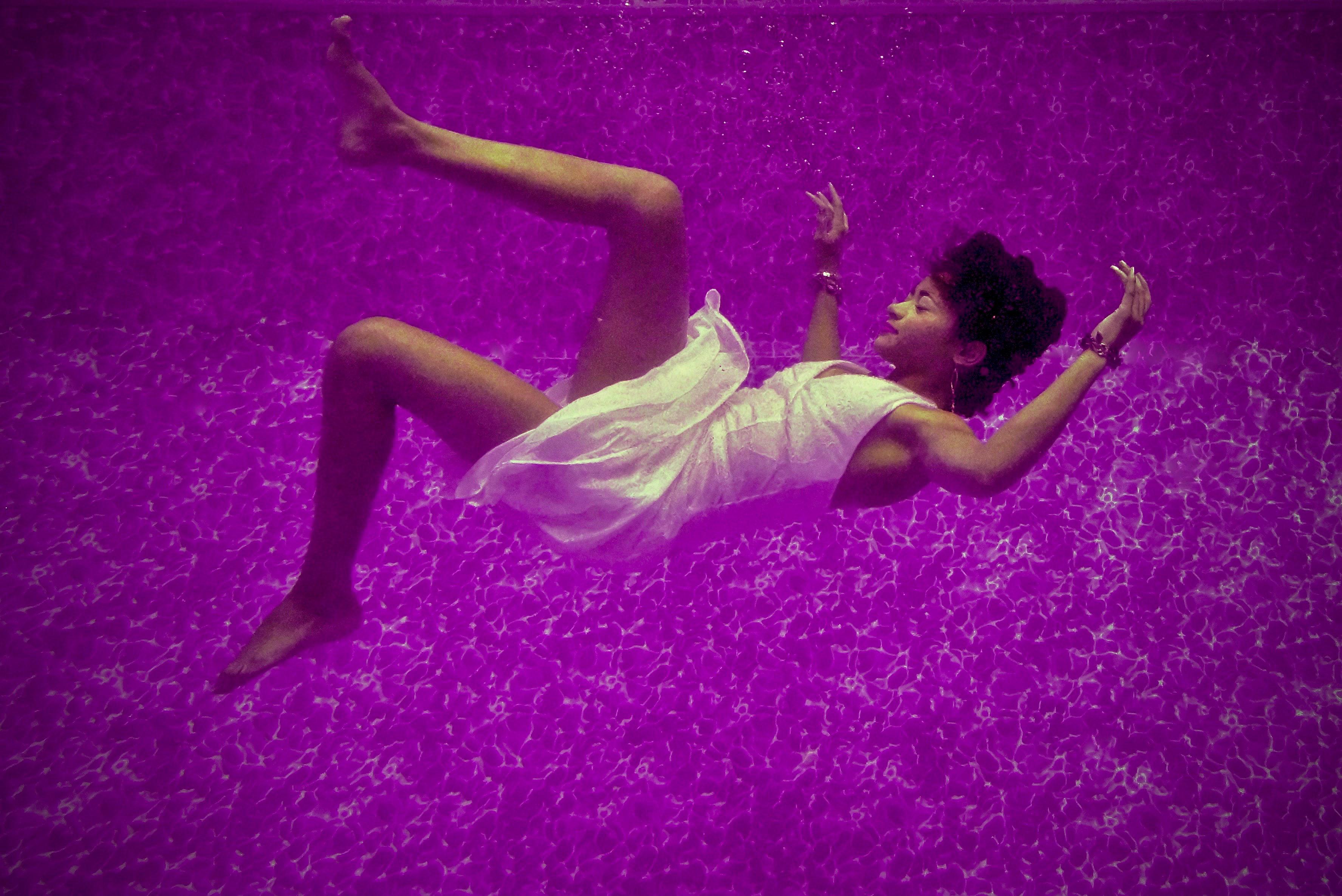Dream hacking to improve your waking life

- MIT’s Media Lab is exploring how we can hack — or interfere with — our dreams to improve our waking lives.
- A device can deliver audio cues during the hypnagogic phase of sleep in order to guide dreams toward a particular theme.
- The ultimate goal is to improve memory and creativity.
This article was originally published on our sister site Freethink and is an installment of The Future Explored, a weekly guide to world-changing technology. You can get stories like this one straight to your inbox every Thursday morning by subscribing here.
New tech is being created to hack our dreams. While the devices aren’t ready for consumers just yet, research coming out of MIT’s Media Lab suggests that one day they could help us understand — and cash in on — the time we spend in dreamland.
Why this matters: The idea that dreams may be connected to our memories and mental health isn’t new. But MIT’s Media Lab is kicking dream research up a notch by exploring how we can hack — or interfere with — our dreams to improve our waking lives. Whether you’re dealing with memory issues, creativity challenges, anxiety or depression, or just have a really big test to ace, “there’s all these things you can do at night that are practically important,” Media Lab researcher Adam Horowitz, tells OneZero. So far, we’ve lacked the technology to take advantage of those nighttime hours — but one of MIT’s new dream-hacking devices, called Dormio, could change all that.
Dormio is a sleep glove that is designed to alter dreams by manipulating and extending that weird, floaty, semi-conscious state we experience before drifting off to slumber (scientifically called “hypnagogia”). It’s the brain’s first sleep phase and is similar to REM with one important difference: in hypnagogia, we can still hear what’s going on around us.
How it works: Dormio tracks the wearer’s sleep cycle and then delivers audio cues during the hypnagogia phase in order to guide their dream toward a particular theme (in a recent experiment, the cue was “tree”). If the wearer begins to fade into deeper sleep, Dormio will prompt them to say what they’re dreaming about. The answers are recorded. This isn’t meant to totally wake the person, only to keep them in an extended state of hypnagogia.
Results: A recent study revealed that when sleep participants were regularly prompted by Dormio to “think of a tree,” 67% of their dreams were tree-related. In comparison, the participants who did not receive regular prompts reported tree-related dreams only 3% of the time.
A creative boost: Although creativity is extremely hard to measure, this study found that participants who did dream of trees showed signs of enhanced creativity when later asked to do things like write a story related to “tree” or imagine alternative uses for the word.
“This is unsurprising in light of historical figures like Mary Shelley or Salvador Dalí, who were inspired creatively by their dreams,” says Horowitz, who led the research. “The difference here is that we induce these creatively beneficial dreams on purpose, in a targeted manner.”
A consumer version of this device could allow users to decide what they want to dream about which “can range from a creative problem they are working on to an experience they want to reflect on or an emotional issue they want to develop a new perspective on,” the researchers write.
More hacks: In addition to Dormio, the lab is working on other tech, such as wearable sleep diffusers. These devices release a scent that the user associates with a certain memory or behavior — this is thought to help improve retention as well as sleep quality and mood. Judith Amores, lead researcher, also hopes that these devices could help trauma victims with PTSD change how they relate to painful memories. By releasing scents associated with a positive memory during a nightmare, she tells OneZero, “you can heal without being fully conscious.”
A bit creepy — or completely natural? Technology that interferes with our subconscious seems a little scary —no one is in a hurry to actually live out Inception. (Rest assured, the science is nowhere close!) But dream incubation tends to happen naturally, too. Remember when you incorporated your alarm clock or the sound of someone’s voice into your dream? Our minds want to narrate our environment, and this natural tendency is exactly what Dormio and other Media Lab machines are harnessing.
What’s Next for Dormio: Horowitz wants to get Dormio into the labs of other scientists for further research — and he made the design open-source. So far, researchers from Harvard, Duke, University of Chicago, and Boston College have begun conducting their own experiments with the device. With more research and bigger trial sizes (the Media Lab’s experiment had only 49 participants), scientists may eventually be able to bring Dormio into our bedrooms, helping us make the most of our non-waking hours.





